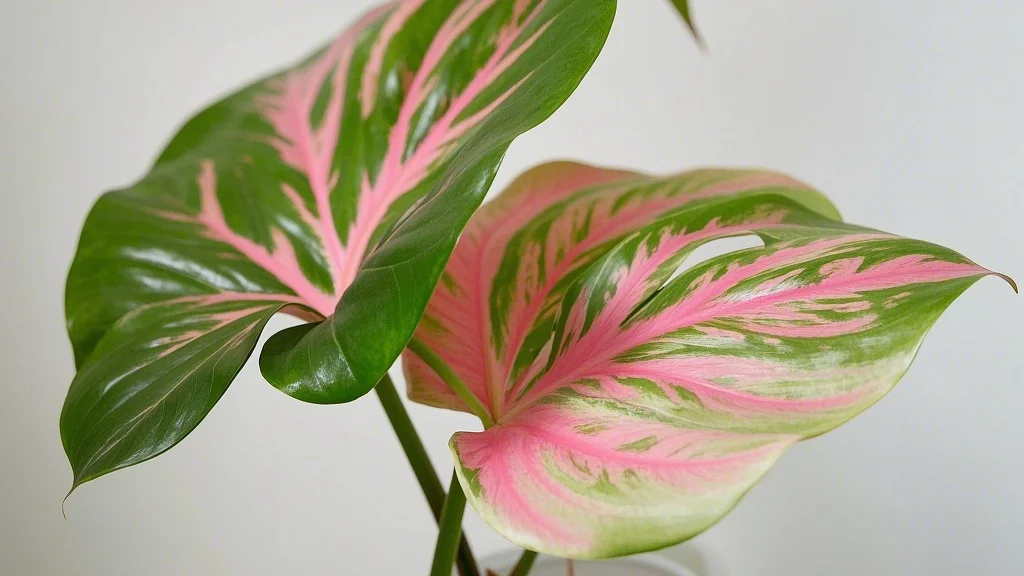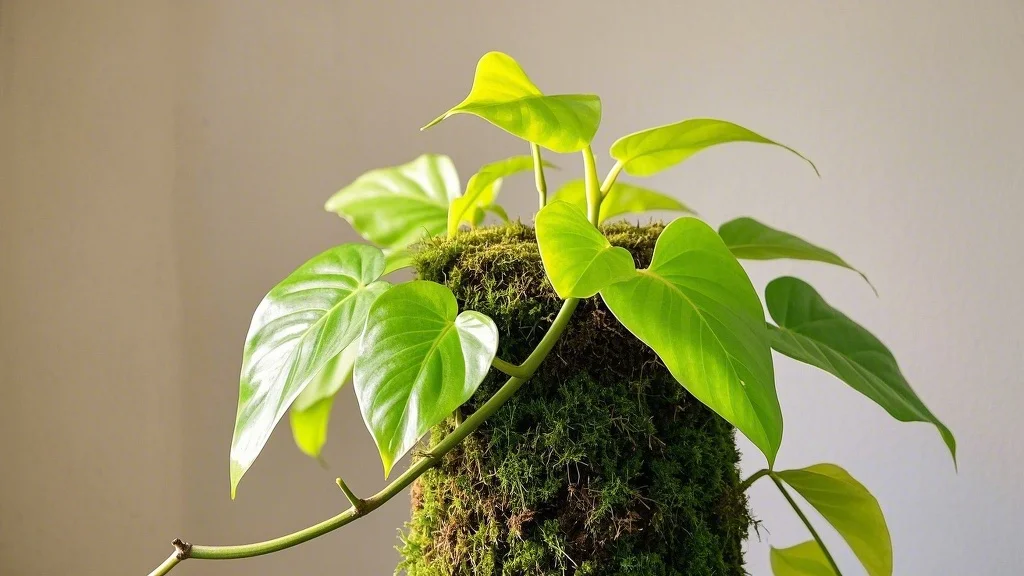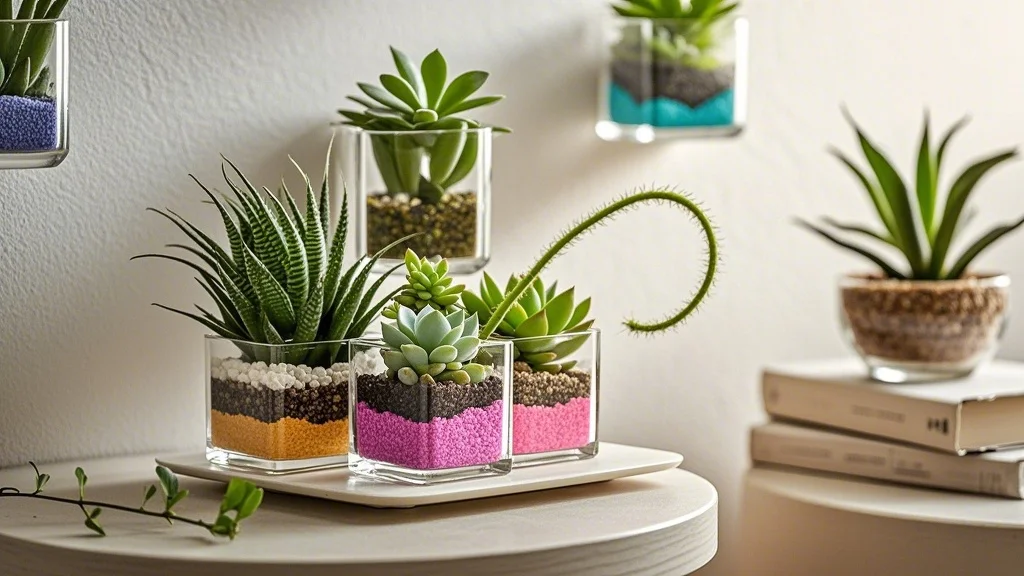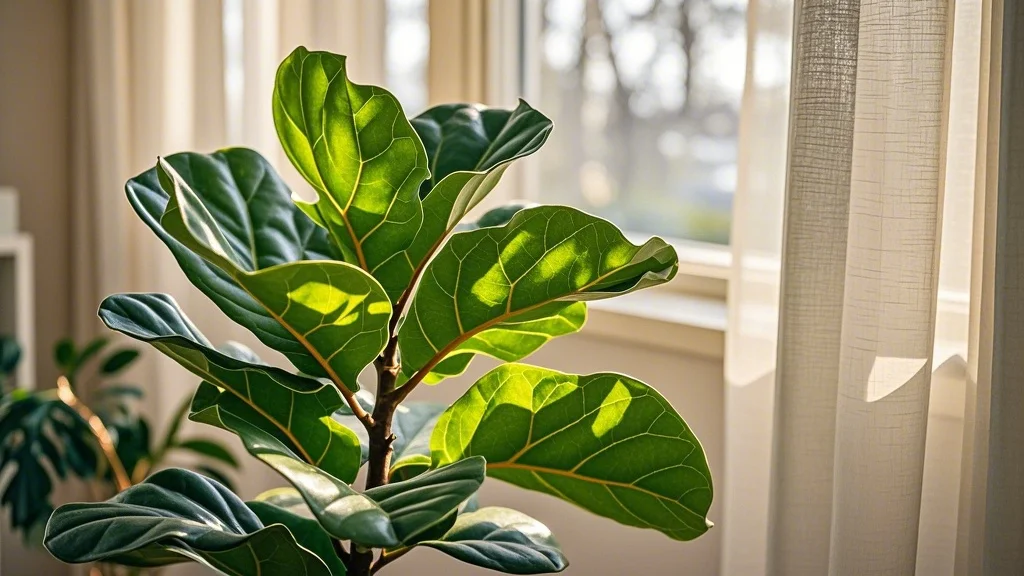Philodendrons have earned their place as some of the most beloved houseplants, gracing urban apartments and homes with their lush foliage and adaptable nature. Whether you’re drawn to the classic heart-shaped leaves of the Heartleaf Philodendron or the dramatic splits of a Monstera (which, despite common confusion, belongs to a different genus but shares the Araceae family), these tropical beauties offer something for every plant enthusiast.
Native to the tropical Americas, philodendrons have evolved to thrive in the dappled light of rainforest floors, making them naturally suited to indoor environments. With over 450 species ranging from trailing vines to upright statement plants, the philodendron genus offers endless variety for your indoor garden.
This comprehensive guide will walk you through everything you need to know about philodendron care, from basic maintenance to troubleshooting common issues, ensuring your plants not only survive but thrive in your urban oasis.
Contents
Popular Philodendron Varieties

Before diving into care specifics, let’s explore some of the most popular philodendron varieties that might catch your eye:
Trailing/Climbing Varieties
- Philodendron hederaceum (Heartleaf Philodendron): The quintessential trailing philodendron with glossy, heart-shaped leaves. Perfect for beginners and available in green or variegated forms.
- Philodendron Brasil: A striking variation of the heartleaf with vibrant yellow-green variegation running through the center of each leaf.
- Philodendron micans (Velvet Leaf Philodendron): Features velvety, iridescent leaves with a bronze-purple undertone that catches the light beautifully.
Upright/Self-heading Varieties
- Philodendron Birkin: A newer hybrid with dark green leaves featuring pinstripe-like white variegation that intensifies as the plant matures.
- Philodendron Pink Princess: Highly sought-after for its dark leaves with stunning pink variegation, though requires more specific care.
- Philodendron Xanadu: Forms a compact, bushy plant with deeply lobed leaves, making it perfect as a floor plant.
- Philodendron gloriosum: Known for its velvety, heart-shaped leaves with prominent white veins.
Essential Philodendron Care
Light Requirements
Philodendrons are remarkably adaptable to different light conditions, but they do have preferences:
- Ideal light: Bright, indirect light is perfect for most philodendrons. This means placing them near east or north-facing windows, or a few feet back from south or west-facing windows.
- Light tolerance: While many philodendrons can tolerate lower light conditions, they won’t thrive or grow as quickly. Variegated varieties need brighter light to maintain their patterns.
- Avoiding direct sun: Most philodendrons will suffer leaf burn if exposed to direct sunlight, especially during the intense midday hours.
Urban gardening tip: If your apartment lacks natural light, philodendrons respond well to grow lights. A full-spectrum LED grow light positioned 12-18 inches above your plant for 8-10 hours daily can supplement insufficient natural light.
Watering Needs
Proper watering is crucial for philodendron health:
- Frequency: Allow the top 1-2 inches of soil to dry out between waterings. This typically means watering once every 7-10 days, though this varies with season, pot size, and home environment.
- Technique: Water thoroughly until it flows from the drainage holes, then empty the saucer to prevent root rot.
- Seasonal adjustments: Reduce watering in winter when growth slows, and increase during active growing seasons (spring and summer).
Testing moisture: Instead of following a strict schedule, check soil moisture by inserting your finger into the soil. If it feels dry up to your first knuckle, it’s time to water.
Soil and Potting
Philodendrons thrive in well-draining, aerated soil:
- Ideal mix: Use a mix of 2 parts quality potting soil, 1 part perlite, and 1 part orchid bark or coco coir. This provides the aeration and drainage philodendrons need.
- DIY option: If creating your own mix, ensure it has organic matter for nutrients while remaining light and airy.
- Commercial alternatives: Pre-made aroid mixes work well, or you can use a standard indoor potting mix amended with extra perlite.
- Pot selection: Choose pots with drainage holes. Terracotta pots work well as they allow soil to dry more evenly, though plastic or ceramic are fine if you’re careful with watering.
Humidity and Temperature
As tropical plants, philodendrons appreciate:
- Humidity levels: Aim for 40-60% humidity. Most philodendrons adapt to average home humidity, but higher humidity encourages larger, healthier leaves.
- Humidity boosting: Group plants together, use pebble trays with water, or run a humidifier nearby during dry winter months.
- Temperature range: Keep philodendrons between 65-80°F (18-27°C). They can tolerate brief periods outside this range but will suffer below 55°F (13°C).
- Avoid drafts: Keep philodendrons away from air conditioning vents, heaters, and cold drafts from windows or doors.
Fertilizing Schedule
Proper nutrition supports lush growth:
- Growing season: Feed monthly from spring through early fall with a balanced liquid houseplant fertilizer diluted to half the recommended strength.
- Winter care: Reduce or eliminate fertilizing during winter months when growth naturally slows.
- Organic options: Fish emulsion or worm castings make excellent organic alternatives, though fish emulsion can have a temporary odor.
Signs of over-fertilization: Brown leaf edges, slowed growth, or white crust on soil surface. If you notice these, flush the soil thoroughly with water.
Propagation: Expanding Your Collection
One of the joys of philodendron ownership is how easily they propagate:
Stem Cutting Method
- Select a healthy stem: Choose a stem with at least 2-3 nodes (the small bumps where leaves emerge).
- Make the cut: Using clean scissors or pruning shears, cut just below a node.
- Prepare for rooting: Remove leaves from the bottom node(s) that would be submerged in water.
- Root in water: Place the cutting in a jar of clean water, ensuring at least one node is submerged. Change water weekly.
- Watch for roots: Roots typically appear within 2-4 weeks. Once they reach 1-2 inches, plant in soil.
- Transition to soil: Plant in a small pot with the same soil mix recommended above. Keep slightly more moist than usual for the first two weeks as the plant adjusts.
Air Layering (For Larger Philodendrons)
- Identify a node: On a mature stem, locate a healthy node.
- Prepare the area: Make a small upward cut about 1/3 through the stem just below the node.
- Apply rooting hormone: Optional but helpful for encouraging root development.
- Add moist sphagnum moss: Wrap damp sphagnum moss around the cut area.
- Seal with plastic: Wrap plastic around the moss and secure with twine above and below.
- Wait for roots: After 3-6 weeks, roots should be visible through the plastic.
- Cut and pot: Once roots are well-developed, cut below the rooted section and pot as a new plant.
Training and Pruning

Philodendrons can be shaped to suit your space:
For Trailing Varieties
- Support options: Moss poles, trellises, or plant stakes help climbing philodendrons grow upward, encouraging larger leaves.
- Attachment: Gently secure stems to supports using plant ties, soft twine, or bobby pins.
- Maintenance: Guide new growth onto the support as the plant grows.
For Bushy Growth
- Pinching: Regularly pinch off the growing tips to encourage branching and fuller growth.
- Strategic pruning: Cut just above a node to promote new growth from that point.
- Timing: The best time to prune is during the active growing season (spring and summer).
Rejuvenation
- For leggy plants: Cut back severely in early spring, leaving at least 2-3 nodes on each stem. New growth will emerge, creating a fuller plant.
- Using cuttings: Don’t waste pruned sections—root them as described in the propagation section.
Common Problems and Solutions
Even these resilient plants can face challenges:
Yellowing Leaves
- Cause: Most commonly overwatering, but can also indicate nutrient deficiency or natural aging.
- Solution: Check soil moisture and adjust watering schedule. If only older, lower leaves are yellowing, this may be normal leaf senescence.
Brown Leaf Tips or Edges
- Cause: Low humidity, over-fertilization, or mineral buildup from tap water.
- Solution: Increase humidity, flush soil thoroughly if over-fertilized, or use filtered water if your tap water is very hard.
Leggy Growth with Small Leaves
- Cause: Insufficient light causing the plant to stretch.
- Solution: Move to a brighter location (still avoiding direct sun) or supplement with grow lights.
Pests
- Spider mites: Tiny pests that cause stippling on leaves and fine webbing. Treat with insecticidal soap or neem oil, focusing on leaf undersides.
- Mealybugs: White, cottony insects that cluster in leaf axils. Remove with alcohol-dipped cotton swabs and treat with insecticidal soap.
- Scale: Small, brown, shell-like insects that attach to stems and leaves. Scrape off gently and treat with horticultural oil.
Prevention: Regularly wipe leaves with a damp cloth to remove dust and check for early signs of pests. Quarantine new plants for 2-3 weeks before placing near your collection.
Diseases
- Root rot: Caused by overwatering or poor drainage. Symptoms include yellowing leaves, mushy stems, and foul odor. Remove affected roots, repot in fresh soil, and adjust watering practices.
- Bacterial leaf spot: Creates water-soaked spots that turn brown or black. Remove affected leaves, improve air circulation, and avoid wetting leaves when watering.
Seasonal Care Tips
Adjust your care routine with the seasons:
Spring and Summer
- Increase watering as growth accelerates
- Resume regular fertilizing schedule
- Monitor for faster growth that may require repotting or pruning
- Perfect time for propagation
Fall and Winter
- Reduce watering frequency as growth slows
- Stop or significantly reduce fertilization
- Move plants away from cold windows and drafts
- Supplement with grow lights if natural light decreases significantly
Advanced Care for Thriving Philodendrons
Repotting
- Frequency: Most philodendrons benefit from repotting every 1-2 years, or when roots begin circling the pot or growing through drainage holes.
- Pot size: Choose a container only 1-2 inches larger in diameter than the current pot. Overpotting can lead to overwatering issues.
- Technique: Gently remove the plant, loosen bound roots, and place in fresh soil at the same depth as before.
- Timing: Spring or early summer is ideal for repotting when the plant is actively growing.
Encouraging Larger Leaves
For those coveting the dramatic, large leaves seen in mature philodendrons:
- Consistent support: Climbing varieties develop larger leaves when allowed to climb.
- Optimal light: Bright, indirect light encourages larger leaf development.
- Proper nutrition: Regular but modest fertilization supports healthy growth.
- Patience: Many philodendrons develop more impressive leaves as they mature—sometimes taking years to reach their full potential.
Philodendrons in Urban Spaces
These versatile plants can enhance various areas of your home:
- Bathroom placement: Many philodendrons thrive in bathroom humidity, provided there’s adequate light.
- Office environments: Heartleaf philodendrons and other low-light tolerant varieties make excellent desk companions.
- Small space solutions: Trailing varieties can be hung to save floor and shelf space while adding vertical interest.
- Statement pieces: Larger varieties like Philodendron Xanadu or Congo make impressive floor plants in living areas.
Conclusion
Philodendrons offer the perfect balance of beauty and resilience for urban plant enthusiasts. Their forgiving nature makes them ideal for beginners, while their diversity provides plenty of collecting opportunities for experienced plant parents.
By understanding their basic needs—moderate light, careful watering, and occasional feeding—you can enjoy these tropical treasures for years to come. Whether you’re nurturing a single heartleaf philodendron or building a diverse collection of rare varieties, these adaptable plants will reward your care with lush, vibrant growth that brings a touch of the tropics to your urban space.
Remember that each plant and growing environment is unique, so observe your philodendrons closely and adjust care as needed. The most successful plant parents are those who learn to “read” their plants and respond to their specific needs rather than following rigid care schedules.
Happy growing!
Looking for more indoor gardening tips? Visit OwnGardens.com for expert guides on everything from plant lighting to fertilization schedules tailored to urban environments.








